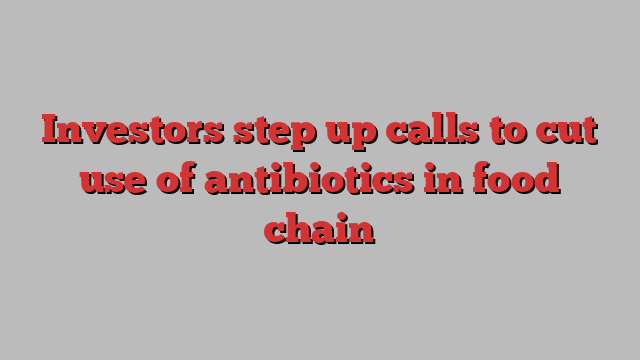
Unlock the Editor’s Digest for free
Roula Khalaf, Editor of the FT, selects her favourite stories in this weekly newsletter.
Investors representing more than $13tn in combined assets have urged policymakers to help curb the spread of drug-resistant “superbugs” by cutting the excessive use of antibiotics in the food supply chain.
Ahead of the UN General Assembly’s second high-level meeting on anti-microbial resistance (AMR) this month, about 80 investors or investor representatives, including Legal & General Investment Management and Australian pension fund Hesta, have called for the use of antibiotics in humans, animals and agriculture to be reduced.
They say this is “not just a health necessity but also an economic imperative”. Resistance to existing anti-microbials is forecast to claim up to 10mn lives annually by 2050, according to the World Health Organization, matching the toll caused by cancer.
Investor Action on AMR (IAAMR), which is behind Tuesday’s call to arms, said the global costs associated with AMR are likely to reach $100tn and lead to a 3.8 per cent decrease in global GDP by 2050.
Investors are “increasingly concerned with the negative impact AMR will have on global financial markets, economic stability and long-term value generation”, it added.
The organisation highlights the need for “global co-operation, sustained funding and innovative solutions” to tackle the spread of superbugs.
Dame Sally Davies, the UK’s special envoy on anti-microbial resistance who helped to found IAAMR in 2020, told the FT it was “an existential, systemic risk” akin to the challenges posed by climate change. “Policy from governments only takes you so far . . . Investors and consumers have so much power,” she added.
Investor groups have in recent years put pressure on companies such as fast-food retailer McDonald’s and Minnesota-based Hormel Foods to limit the use of antibiotics in the supply chain through at least 20 resolutions at annual shareholder general meetings. None has yet been passed.
Davies said companies that cut antibiotic use would have to find other ways of reducing the risk of infection while food and agriculture groups would have to focus less on animal growth, which can be boosted by such products.
She added that investors had “a big role” to play in balancing “the long-term interests of society against short-term profit motives”.
She suggested one in two people would develop cancer, but one in four of those patients would contract a serious infection from which they could subsequently die because of AMR.
She urged investors to think about “what their contribution is to saving lives. If 1.3mn people die each year directly of AMR, then they definitely know people who are dying,” she said, adding that her own goddaughter died nearly two years ago due to health problems associated with AMR.
Jeremy Coller, chair of FAIRR, an investor network with around $75tn in collective assets which raises awareness of the risks in intensive farming and co-founded the IAAMR initiative, said companies from pharma groups to meat producers, took advantage of “lax regulations allowing the routine use of antibiotics in animals, enabling them to cut corners in animal welfare while diminishing antibiotic effectiveness in humans”.
In the US alone, an estimated 80 per cent of antibiotics have been given to livestock rather than people, he said. “Investors recognise that AMR is not only a threat to the health of our people and planet, but to the financial wellbeing of those who rely on investment returns to fund their retirements,” he added.
Maria Larsson Ortino, senior global ESG manager and health lead at LGIM, said AMR posed “a serious threat to investment portfolios, economic stability and global health”.
Earlier this year, the UK government pledged £85mn to support research and development in new antibiotics, improve global health infrastructure, and strengthen surveillance systems to accurately monitor AMR threats.
The UK and Saudi Arabia have called for a panel to monitor the risks and impact of AMR, and provide policymakers with regular scientific assessments.